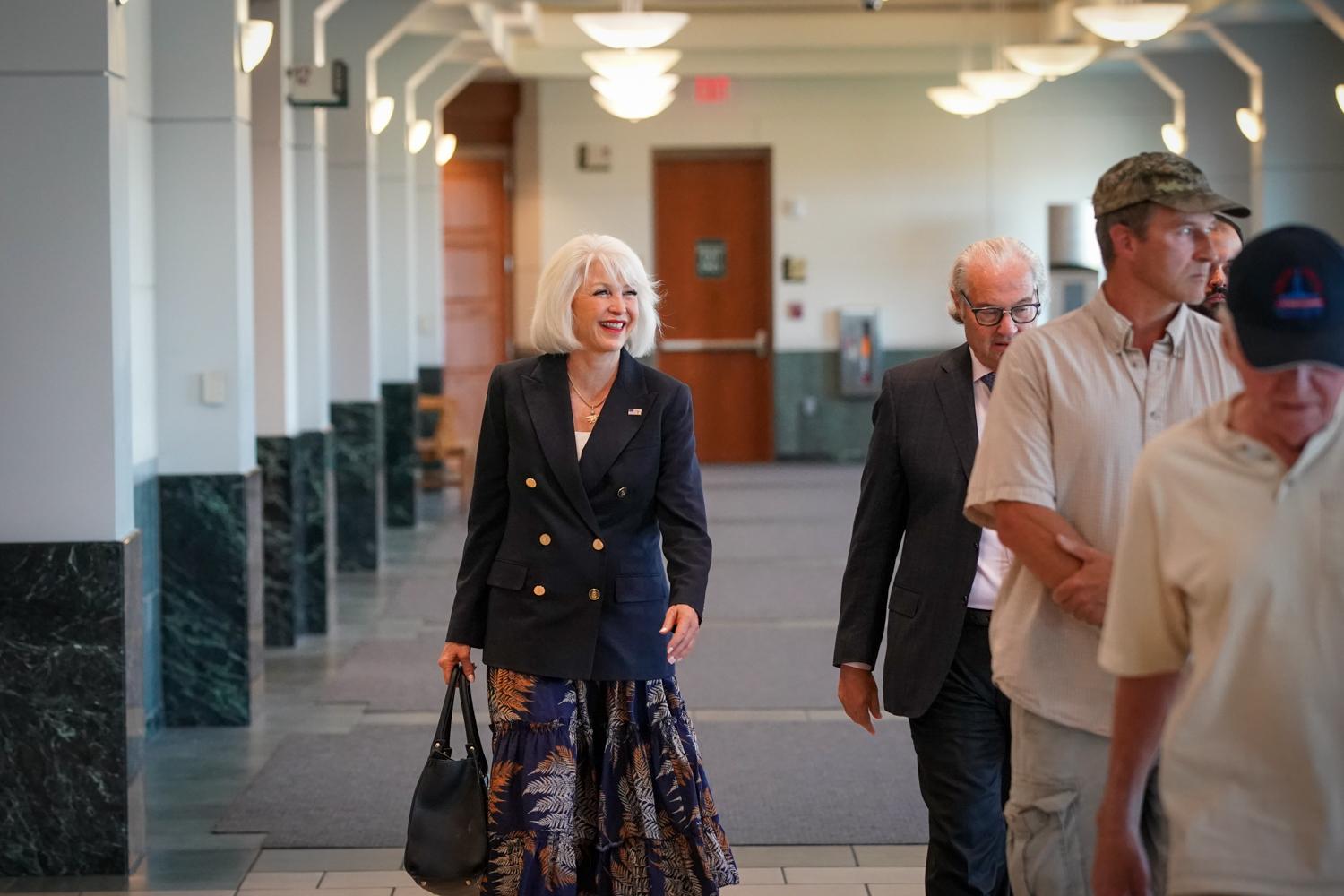
The first child diagnosed with AIDS in Colorado is still alive. And one of his physicians, Dr. Harley Rotbart, thinks that is miraculous. He includes the story in a new collection called “Miracles We Have Seen: America’s Leading Physicians Share Stories They Can’t Forget.” Dr. Rotbart and another contributor to the book, pediatrician Dan Hyman, spoke with Colorado Matters host Ryan Warner.
Read an excerpt of "Miracles We Have Seen"
Date of event: 1985 The First and Still the Most Miraculous Harley A. Rotbart, MD I was in the final month of my three-year fellowship in Pediatric Infectious Diseases when I was called to see Jonathan, a two-year-old former premature baby who couldn’t shake his pneumonia. It had started out looking like a routine case of benign winter viral lung infection, a common problem in young children, especially former premature babies. But instead of the typical week or two course of those infections, Jonathan’s pneumonia lingered for months, well into the spring. He initially required supplemental oxygen given through a tube in his nose. This should have been just a temporary treatment until his lungs healed. But whenever his doctors tried to “wean” Jonathan from the oxygen, he developed breathing distress, his lips turned blue, and the oxygen levels in his blood dropped. When I was asked to evaluate Jonathan for the cause of this persistent lung disease, my first thought was his doctors had called the wrong specialist. Infections don’t often cause chronic (long-lasting) lung disease in children. Before walking into his room for the first time, I reviewed in my head all the “usual suspects” for this type of problem. Cystic fibrosis, perhaps, or maybe an allergic form of pneumonia. I wondered if this could be an unusual appearance of asthma. Or, having been a premature baby, Jonathan might have a condition called bronchopulmonary dysplasia, a form of lung scarring resulting from treatment of immature lungs in babies born too early. None of those are due to infections, though, and I predicted my involvement with Jonathan’s case would be short-lived. There were a few rare infections I would have to investigate—fungus infections unique to certain parts of the country or elsewhere in the world, for example. I would have to ask Jonathan’s mother about their travel history. Pertussis, or whooping cough, can cause a persistent cough, but is preventable by vaccines. Of course, I would ask about Jonathan’s immunization history. After taking a careful history from Jonathan’s mother, doing a thorough physical examination, and reviewing all of his X-rays, I was almost certain this was not an infection—at least not one I had seen or read about before. I discussed Jonathan’s case with my infectious diseases attending (supervising) physician and presented Jonathan’s story to our weekly infectious diseases meeting, where all of our colleagues from around the city met to review interesting and puzzling cases. We agreed on a panel of tests to perform to rule out infection as the cause of Jonathan’s illness. During that next week, we tested Jonathan for all of the germs suggested as possibilities by the experts at the citywide conference. All the tests were negative. Our only remaining option for finding a cause and being able to get Jonathan off oxygen and back to a healthy toddler’s life was a lung biopsy. The decision to do a lung biopsy is never taken lightly — it requires general anesthesia and surgery, both of which come with their own risks in addition to those associated with cutting out a piece of lung tissue. Jonathan’s mother agreed with our recommendation for a lung biopsy, and Jonathan tolerated the procedure well and had no complications. Four days later, the biopsy results came back. The diagnosis was one I had never heard of, nor had anyone else on our team: lymphocytic interstitial pneumonia, or LIP. I want to take a step back now for context. Jonathan’s biopsy was performed in the summer of 1985. The first cases of AIDS (acquired immune deficiency syndrome) in gay men had been reported in the early 1980s in New York and San Francisco. The cause of AIDS was still being debated—most suspected an infection, but not everyone agreed. What kind of infection it might be was completely unknown. In December 1982, the first suspected case of AIDS acquired by blood transfusion occurred in California. In March 1983, the United States Public Health Service (USPHS) issued a warning that individuals in high-risk groups should not donate blood. In December 1984, a thirteen-year-old Indiana boy named Ryan White was diagnosed with AIDS. Ryan was born with hemophilia, an abnormal blood condition that causes episodes of severe bleeding; treatment for those bleeding episodes requires transfusion of blood products. After Ryan’s diagnosis, he received national attention because of the community fear and panic he created simply by attempting to attend school. He and his mother helped educate the nation about AIDS. Tragically, Ryan died of the infection in 1990. The first approved screening test for the AIDS virus (HIV, human immunodeficiency virus) in blood products wasn’t approved until 1985. My patient, Jonathan, was born on March 19, 1983, simultaneously with the USPHS warnings about high-risk blood donors. As a tiny premature baby, he required numerous blood transfusions from donors who had given blood prior to the warnings. There wouldn’t be an approved test for screening blood products for another two years. When the biopsy results showing LIP came back, we were stumped. What is LIP? This was in an era before the Internet, before Google. But as infectious diseases specialists, we knew a lot about the emerging AIDS epidemic on the coasts from the exploding medical literature on the topic, as well as from the hyperbolic media coverage the disease was receiving. We had never had a child with AIDS in Colorado. I called a colleague who had treated the first two adult patients with AIDS in the state and asked if he had heard of LIP. He hadn’t seen it yet in any of his patients, but knew of adult patients in San Francisco who had the condition. He put us in touch with one of those experts, and we sent the slides from Jonathan’s lung biopsy to him. Another two weeks went by before we heard that, indeed, Jonathan had “classic LIP,” and the most likely cause was AIDS, acquired from the transfusions he received as a baby. This was devastating news to Jonathan’s mother and to us. That same summer, 1985, actor Rock Hudson publicly disclosed he had AIDS before his death from the infection. AIDS was now a household word and a widespread worry. We and Jonathan’s mother and the rest of the reading world all knew AIDS was a fatal diagnosis. There were no known survivors of the disease at that point. The only treatment we had was for the complications of AIDS, not for AIDS itself. AIDS medicines weren’t approved for use in adults until 1987 and not approved for use in children until 1990, the year Ryan White died. Jonathan was the first child with AIDS in Colorado, and one of the very first in the United States. Jonathan was infected with the AIDS virus as a premature baby in 1983, first diagnosed with AIDS in 1985, and then went untreated for years until the first medicine became available. Based on everything we knew then, and everything we know even now, there was absolutely no chance of survival. None. We followed Jonathan in our infectious diseases and hematology clinics for several years after that, waiting for one of the inevitable lethal complications of AIDS. By then, several hemophiliac children in Colorado were diagnosed with AIDS, also acquired from blood products as had happened to Ryan White. Jonathan was intermittently quite ill and hospitalized numerous times. His lung disease persisted, and he developed another even more severe pneumonia due to a germ called pneumocystis. In many patients with AIDS at the time, pneumocystis was fatal. He survived it. But his survival became even more miraculous as life threw other horrific obstacles in Jonathan’s path. AIDS became one of the least of his problems. Profiled on Dateline NBC, Jonathan’s life story was shown to go from bad to worse. The local media covered Jonathan’s AIDS infection (“Colorado’s First Childhood Case”), which made him a local celebrity—and a local pariah. Like Ryan White in Indiana, Jonathan’s school attendance became an intense controversy. Neighbors shunned and even threatened the family. As the Dateline NBC episode detailed, churches refused entrance to the family and Jonathan was banned from the local swimming pool. The stress on the family was enormous. Tragically, the interview also revealed even more unthinkable twists and turns—Jonathan’s mother’s suicide attempt, her decline into crack cocaine addiction, her abandonment of Jonathan and his brother, her imprisonment for drug dealing, Jonathan’s own bouts of depression. But thanks to his older brother and a saintly camp counselor, Jonathan still survived. Unimaginable. In the mid-1990s a breakthrough in AIDS treatment occurred using a combination of three highly effective AIDS medicines at once. Jonathan inexplicably, and impossibly, survived until then and was one of the first to receive those medicines. For me, this story came full circle today when I spoke to Jonathan on the phone. On first hearing his voice, I cried. I asked the mature adult voice on the other end if I had the right Jonathan, the one who was in our hospital in Colorado when he was just a little boy. “Yup, that’s me, man.” Jonathan is thirty-two years old now and runs a restaurant in Utah with his brother, the same one who was there for him through all the earlier turmoil in his life. Jonathan was married for several years and has a child, who is now eleven years old. Neither his ex-wife nor his child became infected. Jonathan is still infected with the AIDS virus, but is healthy and the miracle of his survival continues. He continues to be compulsive about taking his AIDS medicines and about maintaining a healthy lifestyle. He is in another long-term relationship with a woman and she, too, is uninfected. Jonathan knows how miraculous his story is—people have been telling him for years. More years than any other baby infected with this disease. To read the complete Dateline NBC interview: http://www.nbcnews.com/id/13756759/ns/dateline_nbc/t/miraculous-life-jonathan-swain/#.VcujRPlVhHw |









